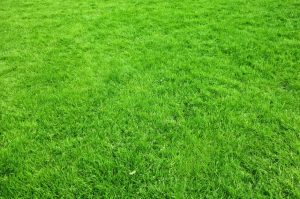Pest control is essential in gardening because pests can cause plant damage and crop damage. While synthetic pesticides have long been used to control pests, they can be harmful to both beneficial insects and the environment. As a result, natural pest control options such as Eco Oil and Neem Oil have been developed.
However, both of these organic pest control options have advantages and disadvantages. This article aims to compare and contrast the two options to assist you in making an informed decision about which one to use in their garden.
What is Eco Oil?
Eco Oil is an organic pest control product commonly used in gardening. It is a natural pesticide alternative made from plant oils such as canola oil, sesame oil, and neem oil. Eco Oil’s active ingredients are derived from these oils and effectively control various pests such as aphids, scale, mealybugs, and whiteflies.
Eco Oil is frequently used as a spray to control plant pests. It works by suffocating the insects, preventing them from breathing and eventually killing them. Eco Oil, unlike synthetic pesticides, is safe for beneficial insects such as bees, ladybugs, and lacewings, making it an excellent choice for gardeners looking to protect their garden’s ecosystem.
Advantages of Eco Oil
The following are some advantages of utilising eco oil as a natural pest control alternative in your garden:
- Eco-beneficial: Eco Oil is biodegradable and manufactured from natural and organic components. It has no negative effects on beneficial insects such as bees, ladybirds, and lacewings, and it leaves no hazardous residues on plants or in the environment.
- Safe: Eco Oil is a non-hazardous alternative to synthetic pesticides. It is non-toxic and poses no danger to humans, pets, or wildlife.
- Effective: Eco Oil is an excellent pest management alternative since it may control various pests like aphids, scale, mealybugs, and whiteflies. It works by suffocating the insects, preventing them from breathing and eventually killing them.
- Easy to Use: Eco Oil is simple to apply and can be administered with a spray bottle or sprayer. It is a convenient alternative for gardeners because it can be blended with water and sprayed directly onto plants.
- Cost-effective: Eco Oil is a low-cost insect control alternative. Although slightly more expensive than synthetic pesticides, it can be used in lower concentrations and is effective in lower quantities, making it a more cost-effective long-term solution.
Therefore, it’s clear that Eco Oil has various advantages as a natural pest control option in gardening, making it a popular choice for many gardeners seeking ecologically friendly and effective solutions.
Disadvantages of Eco Oil
While Eco Oil is a natural and environmentally friendly pest control option, there are some drawbacks to consider, including:
- Limited Residual Control: Eco Oil has low residual control when applied directly to insects, although it effectively reduces pests when administered immediately to the insects. This implies it may not continue to control pests after application, so you may need to reapply it regularly to maintain control.
- Slow-Acting: Eco Oil works by suffocating insects, which can take some time. This implies that it may not give instant pest control and may necessitate many applications to obtain full control.
- Weather Dependent: Eco Oil is less effective in damp situations since rain might wash it away. Applying Eco Oil is critical when the weather is dry with no expected rain.
- Plant Sensitivity: Some plants may be sensitive to Eco Oil and suffer damage or discolouration if applied in high amounts or during hot weather. It is also important to carefully read the label and follow the application directions to avoid plant damage.
- Cost: While Eco Oil may be less expensive in the long run, it may be more costly in the short run than synthetic pesticides. Furthermore, because it requires frequent application to maintain control, it may require more frequent purchases.
What is Neem Oil?
The seeds of the neem tree (Azadirachta indica) are used to make neem oil, a natural and organic pesticide. It has been used for generations in traditional medicine and agriculture and is becoming more popular as a natural pest control solution in gardening.
In horticulture, neem oil is often used to manage pests such as aphids, spider mites, whiteflies, mealybugs, and scale insects. It interferes with the pests’ life cycles, stopping them from feeding, mating, and laying eggs. Furthermore, Neem Oil has antifungal properties, effectively treating fungal diseases such as powdery mildew and black spot.
Neem oil is made from the oil taken from the seeds of the neem tree. It includes several active chemicals, the most potent of which is azadirachtin, which accounts for most of the oil’s insecticidal activities. In addition to azadirachtin, neem oil includes additional chemicals with insecticidal, antifungal, and antibacterial activities.
Advantages of Neem Oil
Some common benefits enjoyed by using neem oil include:
- Broad spectrum control: Neem Oil is effective against various pests and diseases, making it a versatile option for gardeners. It can control insects such as aphids, whiteflies, mites and fungal diseases like powdery mildew and black spot.
- Safe for beneficial insects: Unlike synthetic pesticides, Neem Oil does not harm beneficial insects such as ladybugs and bees. This means that it can be used in gardens without the risk of harming these important pollinators and natural pest control agents.
- Residual control: Neem Oil has some residual activity, which means it can continue to control pests for some time after its application. This can reduce the need for frequent applications and make it a more convenient option for gardeners.
- Systemic action: When applied as a soil drench or injected into trees, Neem Oil can have a systemic effect, which means it is taken up by the plant and can control pests that feed on its sap or leaves.
- Eco-friendly: Neem Oil is a natural and biodegradable pesticide, meaning it does not persist in the environment or accumulate in the food chain. This makes it a safer and more environmentally friendly option than many synthetic pesticides.
Disadvantages of Neem Oil
Neem Oil, like Eco Oil, has some downsides that you should be aware of:
- Slow-acting: Because neem oil takes several days to work on pests, it may not give quick control in some instances. Gardeners may need to be patient and repeat the application of the oil multiple times to get the desired level of control.
- Application frequency: Neem Oil must be applied more frequently than synthetic pesticides to achieve effective control. This can be time-consuming and may necessitate extra effort on the gardener’s part.
- Unpleasant smell: Neem Oil has a strong and unpleasant aroma that some may dislike. It is critical to use the oil in a well-ventilated place and to prevent inhaling the vapours.
- Plant damage: Neem Oil has the potential to harm various plants, especially if used in high concentrations or in hot conditions. It is critical to carefully follow the directions and test the oil on a tiny area before applying it to the entire plant.
- Short shelf life: Neem Oil has a short shelf life of approximately 1-2 years. This implies that gardeners may have to buy new oil every growing season, which can be more expensive than synthetic pesticides with a longer shelf life.
Differences between Eco Oil and Neem Oil
While both Eco Oil and Neem Oil are natural and environmentally friendly pesticides that are commonly used in gardening, there are some significant differences between the two:
- Active ingredients: Eco Oil is generated from petroleum, whereas Neem Oil is extracted from the neem tree. This means their active components are distinct, with Eco Oil containing fatty acids and Neem Oil carrying azadirachtin.
- Control spectrum: While both oils may control various pests and diseases, their control spectra differ. Eco Oil is especially effective against soft-bodied insects like aphids, mites, and whiteflies. In contrast, Neem Oil is effective against similar pests and a broader range of insects like thrips, caterpillars, and mealybugs.
- Mode of action: Eco Oil suffocates and smothers bugs, whilst Neem Oil possesses insecticidal and anti-fungal qualities that upset the insect’s hormonal balance and hinder fungal growth.
- Shelf life: Eco Oil has a longer shelf life than Neem Oil, which has a relatively short shelf life of roughly 1-2 years.
- Smell: While Neem Oil has a strong and disagreeable fragrance, Eco Oil has little to no odour.
| Eco Oil | Neem Oil | |
|---|---|---|
| Source | Petroleum byproducts. | Seeds from the neem tree. |
| Main ingredients | Natural oils and extracts of plant species, mainly eucalyptus. | Azadirachtin, Nimbin, and other compounds from the neem tree. |
| Benefits | Effective against mites and aphids, controls fungal diseases, safer for humans and the environment | Effective against caterpillars and beetles, controls a wide range of pests, promotes plant growth and health. |
| Drawbacks | Can be less effective against some pests, may need more frequent applications, higher cost. | Strong odour, can be harsh on some plants, may harm beneficial insects. |
| Usage | Small gardens, indoor plants, and potted plants. | Larger gardens, outdoor crops, and fruit trees. |
Overall, both Eco Oil and Neem Oil have benefits and drawbacks, and which oil to use will depend on the garden’s specific pests and diseases and the gardener’s preferences and values.
When to use eco oil vs neem oil
Here are some situations where Eco Oil and Neem Oil may be more effective in gardening:
Eco Oil:
- Controlling mites and aphids: Eco Oil is especially effective against soft-bodied insects like mites and aphids, which are frequent garden pests. It suffocates and smothers the insects and is frequently used with other organic pest control treatments for the best results.
- Treating indoor plants or small gardens: Because it is easy to apply and has little to no odour, Eco Oil is an ideal choice for treating indoor plants or small gardens. It is also less expensive when compared to other organic pesticides.
- Controlling fungal diseases: As it provides a physical barrier that stops spores from germinating and spreading, Eco Oil can be useful against some fungal infections, such as powdery mildew.
Neem Oil:
- Controlling caterpillars and beetles: Neem Oil is more effective than Eco Oil against a broader range of pests, including caterpillars, beetles, and other eating insects. It operates by altering the hormonal balance of the insect and reducing its eating and reproductive functions.
- Treating larger gardens or outdoor crops: As it can be applied with a sprayer and has a longer residual impact than Eco Oil, Neem Oil is an excellent choice for treating larger gardens or outdoor crops. It also has anti-fungal qualities, which can aid in preventing and controlling fungal illnesses.
- Improving soil health: Because it includes minerals and chemicals that promote healthy plant growth and minimise soil-borne diseases, neem oil can also be used as a soil conditioner and fertiliser.
In general, whether Eco Oil or Neem Oil is used in the garden will be determined by the specific pests and illnesses present, the size of the garden and the gardener’s personal tastes and values.
How to use Eco Oil and Neem Oil
Here are some general guidelines and precautions to take when preparing and applying Eco Oil and Neem Oil:
Using the oils:
- Eco Oil should be diluted with water at a rate of roughly 2-3%, according to the directions on the product label. Meanwhile, Neem Oil should be diluted with water as directed on the product label, typically at 0.5-2%.
- Eco Oil can be administered with a spray bottle or pump sprayer, covering all plant surfaces, including the undersides of leaves. Neem Oil can also be administered with a spray bottle or pump sprayer, covering all plant surfaces, including the leaves’ undersides.
- Apply Eco Oil and Neem Oil in the early morning or late afternoon when temperatures are lower, and the plants are not in direct sunshine.
- Depending on the degree of the insect infestation and the weather conditions, Eco Oil and Neem Oil may need to be reapplied every 7-14 days.
Safety precautions
In general, while using any pesticide, including Eco Oil and Neem Oil, it is critical to carefully read and follow the instructions on the product label.
Additionally:
- When handling Eco and Neem Oil, use gloves and protective clothing to avoid getting it on your skin or your eyes.
- Children and dogs should be kept away from the treated area until the spray completely dries.
- Applying Eco and Neem Oil during flowering may harm pollinators like bees and butterflies.
- Eco Oil should not be used to pre-stressed plants as it may cause severe damage.
- Using Neem Oil with other oil-based products may result in phytotoxicity or plant harm.
- Neem Oil should not be stored or mixed in metal containers since it may react and emit toxic fumes.
Conclusion
Ultimately, Eco Oil and Neem Oil are natural and effective pest control choices for gardening. Eco Oil is ideal for mites and aphids, indoor plants and small gardens, whereas Neem Oil is best for caterpillars and beetles, larger gardens, and outdoor crops. When using these oils, follow the directions and take the necessary precautions. Use them at the proper time and concentration to maximise effectiveness and minimise danger. Try both oils to find which one works best for the demands of your garden. When used correctly, these oils may keep your garden healthy while causing the least harm to the environment.






